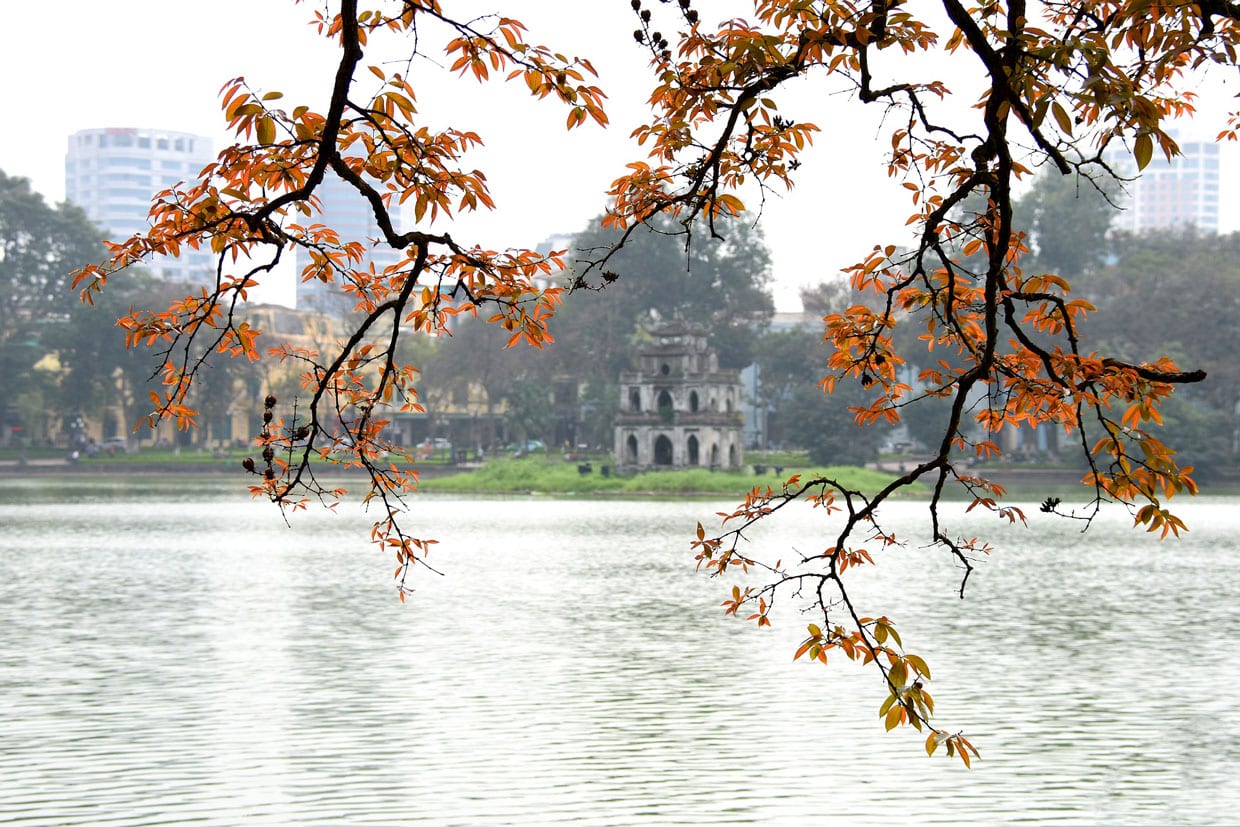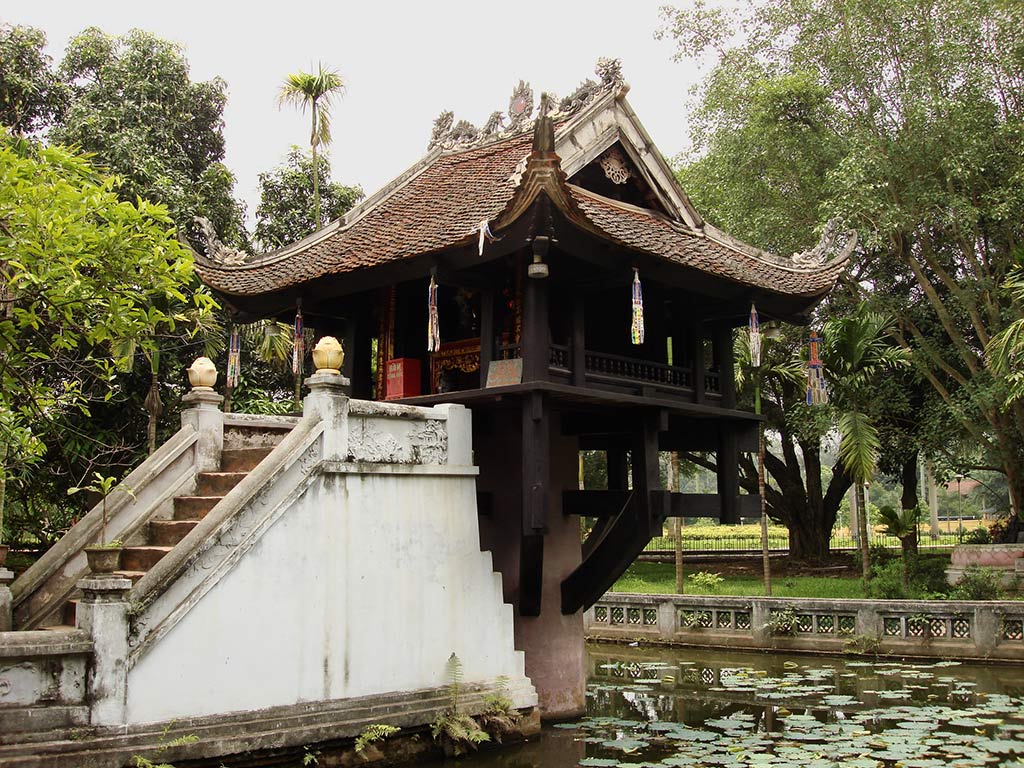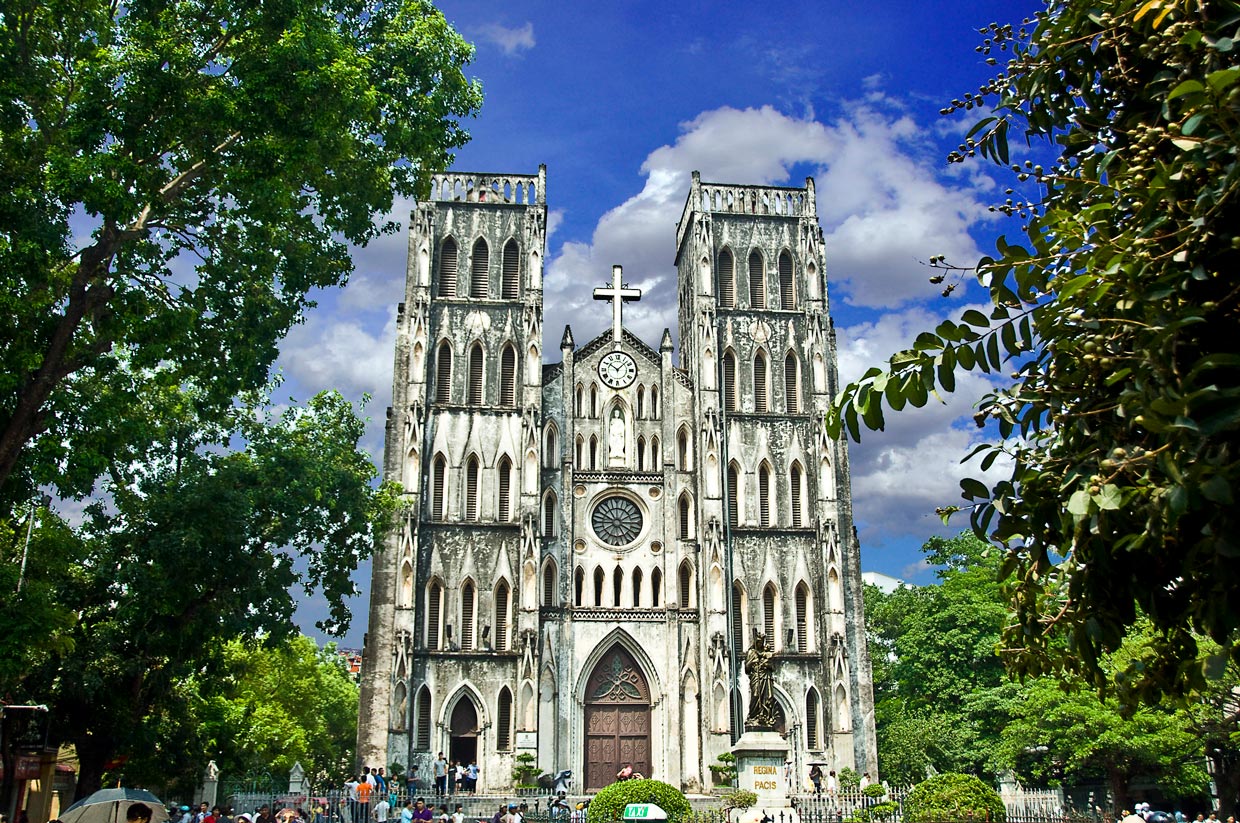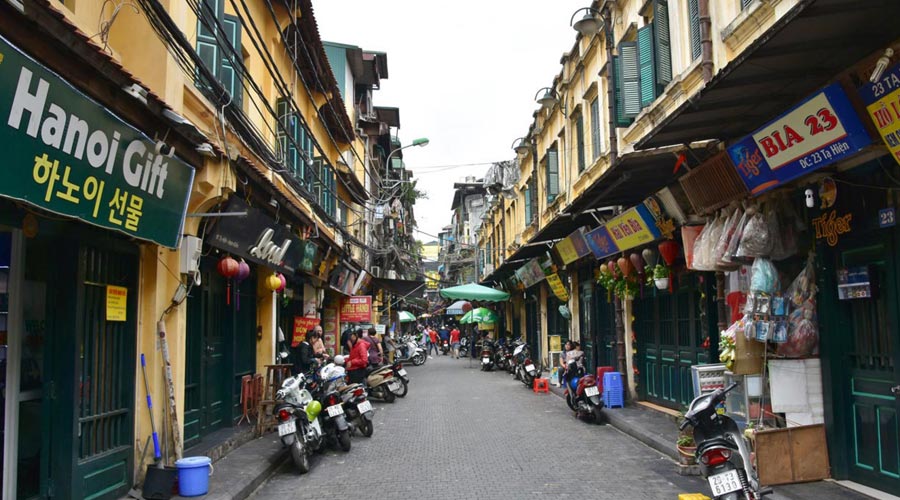The Old Quarter is a large area of the Capital city of Vietnam known as the oldest and perhaps one of the top and most important attractions of the city since it holds many must-see sections. Another name that refers to this section is the “36 Guilds” which refers to the 36 guilds and trades that used to work in a total of 76 streets. The Old Quarter used to be a place for manufacturers and traders resided in, and was also known to be the commercial center of Hanoi. (Photo by ©️ Richard Mortel on Flickr)
Having a long history behind it, as well as beautiful architecture mixed with rich cultural elements, makes this place a hot-spot for tourists and travelers. There are many narrow streets and alleyways in the Hanoi Old Quarter packed with people, bikes, and other forms of traffic. On both sides of many of these streets, you can see shops, vendors, and small stalls, each offering a specific product or service.
General Information
The old Quarter is a great place to go exploring and visiting the ancient and traditional part of Vietnam. The Old Quarter has many tourist attractions inside and around it. These sites were constructed as major areas of Hanoi close to this hub of the city. While exploring, it is good to look at the street signs as they resemble the old trades and crafts that have existed there in the old times.
The extent and the borders of the Hanoi Old Quarters have been fixed ever since the 1995 decision of the Vietnamese Ministry of Construction. This act was done to preserve this neighborhood just as it is and to keep the area mostly intact as one large heritage of the country.
The History of Old Quarter
Hanoi Old Quarter dates back to the 11th century and the Ly Dynasty. During the reign of Ly Thai To, it was decided to move the capital to Hanoi, which resulted in attracting manufacturers and traders to the area. Year after year, the number of crafts grew, and similar trades began to develop and grow near each other. Each of these trades or crafts formed their own guilds, which were not limited to only one street. When a new guild was formed, the type of product also affected the naming of the streets and guild areas.
Over centuries, this region began to prosper and grow larger. At the same time, for tax-related reasons, the shape and architecture of the stores and businesses developed into a unique form. The stores paid their tax according to the width of the store-front. For this reason, the people build their stores like long rectangles with that are only a few meters wide. The shop owners and their families used to live in these buildings, turning them into shop-houses. The front is turned into a shop while the area behind and the floor above the shop are the living quarters.
Ever since the 19th century and during the rule of the French, the shape of these neighborhoods has changed again. Some of the parts fell to ruin while others were destroyed or altered. There used to be gates and walls around areas of town along with pagodas that are now gone, and not just because of the interferences made by the French. After some decades, the area was growing again and underwent partial repairs by the French. These renovations left their mark, as the architecture of the buildings and the streets were altered to some extent.
This area, known as The Old Quarter, is still a commercial heart in the north of Hanoi. Its general location is between the Imperial Citadel of Thang Long and the Red River. The northern border of the Old Quarter ends at Hang Dau; The southern border ends at the streets of Hang Bong, Hang Gai, Cau Go, and Hang Thung; From the west, it ends at the Phung Hung street; And finally, from the east, it is limited to the Tran Quang Khai and Tran Nhat Duat streets.
Top Attractions to Visit in Hanoi Old Quarter
All the streets and shops of the Hanoi Old Quarter are worth a visit as you walk around and admire them. There are also several activities that you can participate in along with the people living in these streets. Make sure to discover the nightlife and the restaurants in this area whenever you go to explore! In any case, here are some of the top places that you can find in the Old Quarter, which are worth the visit:
Hoan Kiem Lake & Ngoc Son Temple
Both the lake and the temple in the middle are beautiful sights to see in the southern parts of the neighborhood. There is an ancient story about the lake and the statue inside the Ngoc Son about a legendary sword, given to the emperor for the war. The story includes The Golden Turtle god as well, which is why on a small and inaccessible island, you can see the turtle tower. Visit Hoan Kiem and Ngoc Son to discover both the history and the legends behind this lake.

Hanoi Opera House
As soon as you enter some of the streets you can see the architecture of the French on several of the areas that were rebuilt in the Hanoi Old Quarter. One of the most prominent buildings is the Hanoi Opera House, left by the French, which has now become an element of what has happened in Old Quarters in its past.
87 Ma May Ancient House
If you wonder how the people used to live and how their hoses looked like on the inside, be sure to visit the 87 Ma May Ancient House. This visit will not take long and will show you the artifacts of the old Vietnamese people of Hanoi Old Quarter.
National Museum of History
If you are interested in history and visiting the 87 Ma May Ancient House did not quench your thirst for learning, make sure to visit the National Museum of History. Inside the museum, you will see more artifacts belonging to the shops as well as the houses. You can also see parts of the history and the changes that took place in Hanoi along with ancient books and documents.
One Pillar Pagoda
One ancient part of the Buddhist people of Vietnam is the One Pillar Pagoda which was built according to what Emperor Ly Thai had seen in a dream. Other than the history, it is a unique construction that stands in a pond. It is now still an important part of the city as people come to enjoy the spiritual sense of the building and relax in the park and near the pond.

Thang Long Water Puppet Theatre
Due to the importance of culture, it is a good idea to visit the Than Long Water Puppet Theatre in the Hanoi Old Quarter. In this building, you can learn about one of the most important aspects of life in Vietnam, which is farming. The performances are rooted in history and also legends of ancient times. As such, the legend behind the Hoan Kiem Lake can be seen among the plays other than the stories about the importance of rice and harvest.
Dong Xuan
When exploring a neighborhood dedicated to ancient crafts and trade, it is a great idea to visit a historic market such as Dong Xuan. You can find delicious snacks and foods around and even inside the market, as well as woodcrafts and decorative items. The market is known to offer good quality and low prices, which makes it worthwhile.
Bach Ma Temple
The oldest temple on the Hanoi old Quarter is the Bach Ma Temple right at the heart of the neighborhood. It is another one of the city’s buildings that has a story to tell other than its history and significance. It is said that the temple also served as an important part of the citadel’s defense on the eastern side.
St. Joseph Cathedral
The very first building that the French rulers built during their rule is the St. Joseph Cathedral. Among the pagodas and local elements of mythology and theology stands this building with its unique architecture. This building still serves as a sacred place of worship for the Christians of Vietnam.

Other Activities in Hanoi Old Quarter
Evidently, there are other things to do and places to visit in such an ancient place like Hanoi Old Quarter. As you walk around and explore, make sure to try some local cuisine and drinks in Vietnam. Shopping at the Dong Xuan or any other shops in these streets is very much recommended, but make sure to haggle. You can visit both during the day and night to experience both aspects of life in The Old Quarter.































